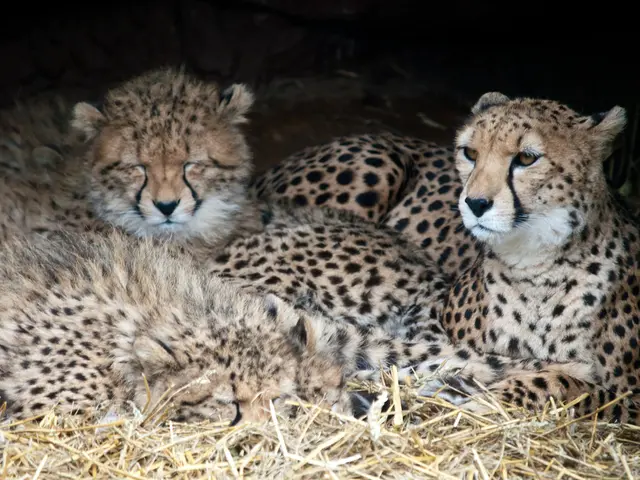Wind Power for the People: Selbitz's pioneering citizen-funded turbine arrives at the German Museum
- citizen power, wind energy, energy transition, ethical investment, German Museum*
German Museum Installs First Wind Turbine from Bavaria - German Museum receives windmill from Bavaria's first citizen
Brace yourself for an exciting chunk of green history! The oldest citizen-owned wind turbine in Bavaria is set to become a star exhibit at the German Museum. Hailing from Selbitz in the district of Hof, this visionary energy hub will make its way to Munich, ready to inspire visitors from 2028 onwards.
Wolfgang Degelmann, district manager of the Nature Conservation Association (BN) in Hof, fondly refers to the wind turbine in his hometown as his "baby." Built in 1995 and operational since 1996, this pioneering infrastructure will soon be part of the permanent exhibition "Energy - Power" at the German Museum, guided by museum spokesman Gerrit Faust. Post a general revamp in three years, the exhibition building's second part will reopen with new displays.
Fumes and smog
There's a sobering story behind the town's drive for clean energy. Hof's once-poor air quality was a severe concern, with toxic pollutants coming from three major sources: the coal mining areas in the nearby Czech Eger Valley, the Ruhr area, and the Leuna works near Halle on the Saale, which was once the largest chemical plant in the GDR. The poor air quality had worrying consequences, with many cases of pseudocroup, an inflammation of the upper airways affecting babies and young children, in the region of Hof.
Homegrown power
To combat the pollution and generate clean energy locally, the BN was determined to build a wind turbine. Funding was a hurdle—until the association came up with a citizen participation model. Local residents could invest between 1,000 and 20,000 DM, which provided the groundwork for the wind power plant's financing. This resulted in 350,000 DM in equity capital. The Free State of Bavaria provided a subsidy of 100,000 DM, while the BN took out a loan of 900,000 DM. Though more wind turbines in Bavaria are in the hands of companies compared to citizens, the Selbitz model showed that citizen-led projects can be viable and effective.
From the ground up
Things are looking up for the Selbitz wind turbine. While its entire structure won't be on display at the German Museum, only the gondola will be showcased, allowing visitors to peer inside and understand the functioning of the wind power plant better. The exhibit will also present the idea of citizen-funded energy projects, making for an inspiring addition to the museum lineup, as Gerrit Faust puts it: "In the end, we not only got an object of the right size, but also one with an exciting story."
Ready, set, co-create!
Tapping into the power of collective action is the key to a sustainable future. Embracing the citizen-led approach of energetic Selbitz sets the bar high for other communities seeking local solutions to global environmental challenges. The exhibit at the German Museum is not just a chance to marvel at cutting-edge green technology but also a call to action, inviting visitors to become part of the movement that's reshaping our world.
Do you have more questions about citizen-powered energy projects, the German Museum, or the fascinating history of energy production? Reach out, and let's explore together!
- The citizen-owned wind turbine from Selbitz, a small town in Bavaria, will be showcased at the German Museum, inspiring visitors with its pioneering role in the energy transition and exemplifying ethical investment.
- The wind turbine, often referred to as Wolfgang Degelmann's "baby," was operational since 1996 and proved to be a viable and effective model for citizen-led energy projects when finance was a hurdle.
- The exhibit at the German Museum will feature the gondola of the wind turbine, allowing visitors to understand its functioning while learning about the concept of citizen-funded energy projects.
- Although the structure of the Selbitz turbine won't be put on display, the exhibit promises to evoke excitement and offer a glimpse into the fascinating world of renewable-energy industry and environmental-science.
- Some pieces of turbine equipment will be displayed at the HOFORG exhibition in Hof, where they will join turbines showcased for the international hydraulic and renewable energy technology exhibitions in Bavaria.
- Beyond being a piece of green history, the exhibit at the German Museum is a call to action for visitors to embrace the citizen-led approach perused by Selbitz and become an active part of the movement that's shaping the future of energy production and finance in EC countries.








